1,052 New COVID-19 Cases, 13 Deaths
State hits 85,000 tests per week goal for second time. Will it be sustained?
Wisconsin recorded over 1,000 new COVID-19 cases in 24 hours for the second time.
The Department of Health Services reported 1,052 new cases in the past 24 hours according to data released Thursday afternoon.
The new cases come from 15,264 processed tests, the second-highest total on record. As a result for just the second time since the outbreak began the state recorded over 85,000 tests processed in a seven-day period. The state’s Badger Bounce Back plan set the threshold as a target for combating the virus.
The state reports a daily testing capacity of 24,156 spread across 83 labs.
Is the actual testing or the capacity high enough? “We continue to believe as part of this that we need to push both of those numbers up,” said DHS Secretary-designee Andrea Palm during a media briefing Thursday afternoon. “We are interested in getting well above 100,000 tests per week as part of the strategy to ensure we are testing adequately.”
“Demand for testing continues to rise,” said Palm, who then pivoted to address the impending fall flu season. “If you were a betting person, you might bet we were going to see even more demand for testing.”
Officials have looked for the positive case rate to trend downward as testing increases as an indication of a slowing of the disease spread and an adequate amount of tests being administered.
For the second straight day, data on the number of people actively hospitalized was unavailable. A message on the Wisconsin Hospital Association dashboard said the organization is making changes to accommodate “recently announced requirements from the U.S. Department of Health and Human Services. We are working to make any disruption as short and minimal as possible.”
DHS reported that 48 people were newly hospitalized in the past 24 hours with a confirmed case of the disease.
The state reported 13 new deaths in the past 24 hours, increasing the outbreak total to 878. DHS reported an average of 4.27 deaths per day over the past 30 days, a figure that has now climbed after hitting an outbreak low over the weekend.
Over half of the new cases in the past 30 days have been in individuals under the age of 40. Over the past month, one-third of new cases have been people in their 20s. Younger people have substantially lower hospitalization and death rates from the disease.
“These new cases have been part of two patterns,” said Palm. “A significant number of cases that reported attending gatherings like parties, bars and barbecues and an increase in gathering in young people.”
A total of 45,899 people have tested positive for the disease since the outbreak began, with 20,568 of those coming in the past 30 days and 6,272 in the past week. DHS reports that 77 percent of individuals with a confirmed case have “recovered,” as defined by a documented abatement of symptoms or a diagnosis over 30 days ago. The percent fell from a high of 79 as a surge in new cases was reported.
Milwaukee County continues to have the worst outbreak in the state, both in total number and per-capita rate.
According to DHS data, 1,802.2 out of every 100,000 Milwaukee County residents have tested positive for COVID-19 (up from 1,758.2) since the outbreak began. Racine County has 1,429.9 cases per 100,000 residents (up from 1,401.8), Brown County, which is anchored by Green Bay, has 1,411.5 cases per 100,000 residents (up from 1,396.9).
Kenosha (1,273.7), Walworth (964), Trempealeau (832.3), Rock (769), Iron (699.9), Dane (692.5), Dodge (674.4), Waukesha (659.8), La Crosse (591.4), Forest (587.7) and Lafayette (561.7) are the only other counties with more than 550 cases per 100,000 residents.
The statewide average of cases per 100,000 residents rose to 794.3 (up from 776.1 yesterday).
The state’s weekly activity level update, issued Wednesday afternoon, shows that only Iron County has a greater two-week per-capita case rate than Milwaukee (500 versus 430). But the size difference between the two counties masks the discrepancy in the actual number of new cases, Iron County has 29 new cases, Milwaukee has 4,049.
Charts and Maps
Percent of COVID-19 cases by hospitalization status
| Hospitalization status | Number of confirmed cases as of 7/23/2020 | Percent of confirmed cases as of 7/23/2020 |
|---|---|---|
| Ever hospitalized | 4,273 | 9% |
| Never hospitalized | 26,221 | 57% |
| Unknown | 15,405 | 34% |
| Total | 45,899 | 100% |
Percent of COVID-19 cases resulting in hospitalization within age group
Confirmed COVID-19 cases and deaths by gender
Confirmed COVID-19 cases and deaths by race
Confirmed COVID-19 cases and deaths by ethnicity
Number of positive cases and deaths by county
| Wisconsin County | Positive as of 7/23/2020 | Negative as of 7/23/2020 | Deaths as of 7/23/2020 | Rate (positive cases per 100,000 people) as of 7/23/2020 | Case fatality percentage (percent of cases who died) as of 7/23/2020 |
|---|---|---|---|---|---|
| Adams | 54 | 2,097 | 2 | 269.0 | 4% |
| Ashland | 13 | 1,486 | 0 | 82.7 | 0% |
| Barron | 87 | 4,723 | 2 | 192.3 | 2% |
| Bayfield | 15 | 1,651 | 1 | 100.1 | 7% |
| Brown | 3,667 | 39,725 | 49 | 1411.5 | 1% |
| Buffalo | 33 | 1,389 | 2 | 250.6 | 6% |
| Burnett | 7 | 1,263 | 1 | 45.9 | 14% |
| Calumet | 201 | 4,849 | 2 | 403.6 | 1% |
| Chippewa | 177 | 8,981 | 0 | 278.1 | 0% |
| Clark | 152 | 3,156 | 7 | 440.7 | 5% |
| Columbia | 173 | 8,126 | 1 | 303.8 | 1% |
| Crawford | 49 | 2,967 | 0 | 300.8 | 0% |
| Dane | 3,669 | 100,739 | 33 | 692.5 | 1% |
| Dodge | 592 | 13,893 | 5 | 674.4 | 1% |
| Door | 78 | 3,728 | 3 | 284.3 | 4% |
| Douglas | 82 | 3,795 | 0 | 188.9 | 0% |
| Dunn | 79 | 4,644 | 0 | 177.5 | 0% |
| Eau Claire | 421 | 12,322 | 3 | 408.8 | 1% |
| Florence | 5 | 518 | 0 | 115.3 | 0% |
| Fond du Lac | 463 | 12,737 | 6 | 452.5 | 1% |
| Forest | 53 | 784 | 4 | 587.7 | 8% |
| Grant | 261 | 7,683 | 14 | 503.6 | 5% |
| Green | 119 | 4,056 | 1 | 322.8 | 1% |
| Green Lake | 49 | 2,156 | 0 | 261.2 | 0% |
| Iowa | 54 | 3,454 | 0 | 228.6 | 0% |
| Iron | 40 | 675 | 1 | 699.9 | 3% |
| Jackson | 38 | 4,590 | 1 | 185.3 | 3% |
| Jefferson | 461 | 10,194 | 4 | 544.6 | 1% |
| Juneau | 84 | 4,811 | 1 | 318.0 | 1% |
| Kenosha | 2,144 | 22,676 | 49 | 1273.7 | 2% |
| Kewaunee | 96 | 2,128 | 1 | 471.5 | 1% |
| La Crosse | 697 | 15,057 | 1 | 591.4 | 0% |
| Lafayette | 94 | 1,931 | 0 | 561.7 | 0% |
| Langlade | 14 | 1,784 | 1 | 73.1 | 7% |
| Lincoln | 49 | 2,765 | 0 | 176.0 | 0% |
| Manitowoc | 219 | 8,592 | 1 | 275.8 | 0% |
| Marathon | 432 | 10,242 | 3 | 319.4 | 1% |
| Marinette | 202 | 5,845 | 3 | 498.3 | 1% |
| Marquette | 61 | 1,583 | 1 | 401.1 | 2% |
| Menominee | 14 | 1,511 | 0 | 305.7 | 0% |
| Milwaukee | 17,197 | 150,623 | 422 | 1802.2 | 2% |
| Monroe | 162 | 6,128 | 1 | 356.0 | 1% |
| Oconto | 135 | 5,068 | 0 | 359.5 | 0% |
| Oneida | 59 | 3,739 | 0 | 166.9 | 0% |
| Outagamie | 883 | 21,297 | 12 | 477.9 | 1% |
| Ozaukee | 440 | 8,768 | 16 | 498.4 | 4% |
| Pepin | 32 | 844 | 0 | 440.6 | 0% |
| Pierce | 140 | 3,794 | 0 | 336.5 | 0% |
| Polk | 91 | 4,941 | 2 | 209.9 | 2% |
| Portage | 310 | 7,600 | 0 | 439.1 | 0% |
| Price | 18 | 1,388 | 0 | 133.4 | 0% |
| Racine | 2,794 | 37,304 | 69 | 1429.9 | 2% |
| Richland | 19 | 2,186 | 4 | 108.3 | 21% |
| Rock | 1,244 | 20,971 | 25 | 769.0 | 2% |
| Rusk | 13 | 1,094 | 1 | 91.7 | 8% |
| Sauk | 253 | 10,269 | 3 | 397.8 | 1% |
| Sawyer | 19 | 2,244 | 0 | 116.1 | 0% |
| Shawano | 119 | 5,340 | 0 | 290.2 | 0% |
| Sheboygan | 433 | 12,998 | 5 | 375.9 | 1% |
| St. Croix | 356 | 8,944 | 2 | 404.9 | 1% |
| Taylor | 37 | 1,456 | 0 | 181.8 | 0% |
| Trempealeau | 245 | 4,331 | 1 | 832.3 | 0% |
| Vernon | 46 | 3,319 | 0 | 150.7 | 0% |
| Vilas | 21 | 1,803 | 0 | 97.3 | 0% |
| Walworth | 993 | 12,830 | 20 | 964.0 | 2% |
| Washburn | 9 | 1,525 | 0 | 57.4 | 0% |
| Washington | 631 | 11,485 | 19 | 469.0 | 3% |
| Waukesha | 2,632 | 39,986 | 42 | 659.8 | 2% |
| Waupaca | 259 | 6,380 | 14 | 503.5 | 5% |
| Waushara | 58 | 4,611 | 0 | 240.5 | 0% |
| Winnebago | 901 | 22,767 | 16 | 530.2 | 2% |
| Wood | 152 | 7,503 | 1 | 207.4 | 1% |
| Total | 45,899 | 778,842 | 878 | 794.3 | 2% |
If you think stories like this are important, become a member of Urban Milwaukee and help support real, independent journalism. Plus you get some cool added benefits.
More about the Coronavirus Pandemic
- Governors Tony Evers, JB Pritzker, Tim Walz, and Gretchen Whitmer Issue a Joint Statement Concerning Reports that Donald Trump Gave Russian Dictator Putin American COVID-19 Supplies - Gov. Tony Evers - Oct 11th, 2024
- MHD Release: Milwaukee Health Department Launches COVID-19 Wastewater Testing Dashboard - City of Milwaukee Health Department - Jan 23rd, 2024
- Milwaukee County Announces New Policies Related to COVID-19 Pandemic - David Crowley - May 9th, 2023
- DHS Details End of Emergency COVID-19 Response - Wisconsin Department of Health Services - Apr 26th, 2023
- Milwaukee Health Department Announces Upcoming Changes to COVID-19 Services - City of Milwaukee Health Department - Mar 17th, 2023
- Fitzgerald Applauds Passage of COVID-19 Origin Act - U.S. Rep. Scott Fitzgerald - Mar 10th, 2023
- DHS Expands Free COVID-19 Testing Program - Wisconsin Department of Health Services - Feb 10th, 2023
- MKE County: COVID-19 Hospitalizations Rising - Graham Kilmer - Jan 16th, 2023
- Not Enough Getting Bivalent Booster Shots, State Health Officials Warn - Gaby Vinick - Dec 26th, 2022
- Nearly All Wisconsinites Age 6 Months and Older Now Eligible for Updated COVID-19 Vaccine - Wisconsin Department of Health Services - Dec 15th, 2022
Read more about Coronavirus Pandemic here


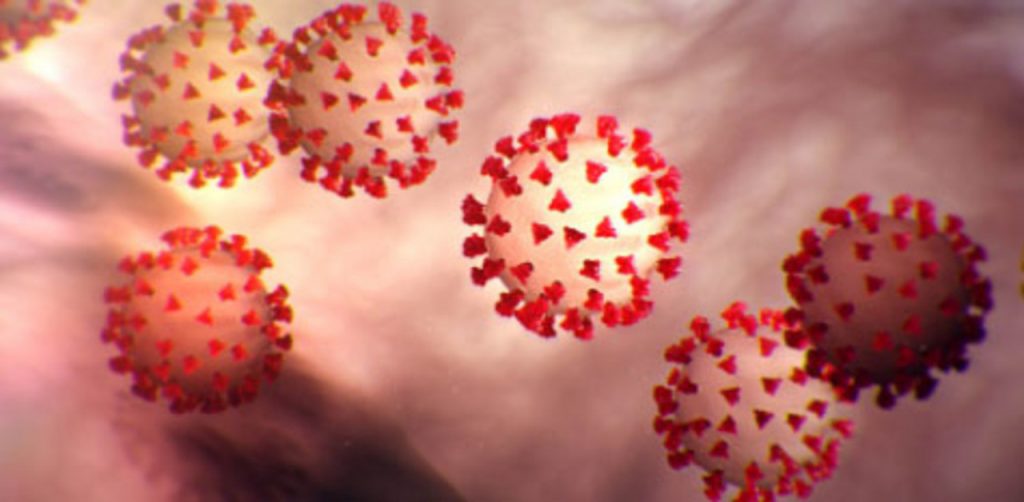
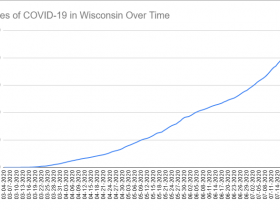
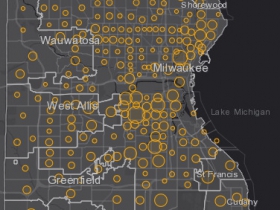
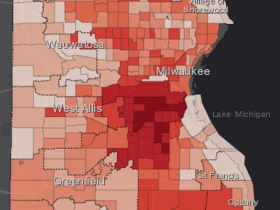
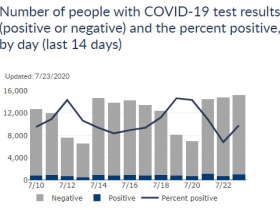
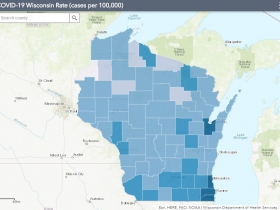
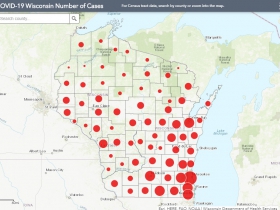

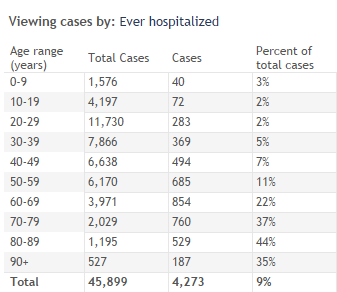

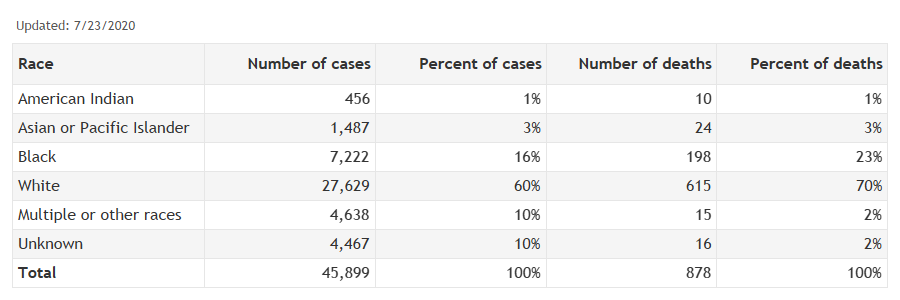




















While all of this is good Let us make one change to make it better and that is Start over with testing so that ALL test results are in 24 hours and then apologize for then having to retake the test to those who have to retake it. Do not know if you heard but this from my Republican State Senator Nass – Holding back negative results!!!!!
Peace Tom Spellman 414 403 1341
Wisconsin Covid-19 Testing – Significant Backlog in Reporting of Negative Results
Nass: Backlog of potentially thousands of negative results has skewed the data.
Senator Steve Nass (R-Whitewater) has been pursuing the Wisconsin Department of Health Services (DHS) to publicly acknowledge there has been a significant backlog in local public health departments entering thousands of negative Covid-19 test results. Earlier this week, Dane County admitted they had not entered all of their negative results since July 10th and was running about a two week backlog in processing negative results. Dane County is Wisconsin’s second largest county and has seen a huge increase in people seeking testing since mid-June.
“DHS and local public health departments have been aware of the backlog in counting negative test results and have not been transparent with the public about the situation. By rapidly including the positive test results but delaying thousands of negative test results from being included in the data released to the public, it provides a seriously incomplete picture of Covid-19 in Wisconsin,” Nass said.
DHS has provided limited information regarding the backlog even with their confirmation it exists and is significant. Here is what we know:
-Most counties are attempting to enter positive Covid-19 test results in the state data collection system within 1-3 days.
-Counties that have seen increases in Covid-19 testing volumes over the last two months (which is most of the 72 counties) have dealt with backlogs in entering the negative results into the state system. Often the delay is believed to be about 5-6 days, but there are situations like Dane County that have run 10 days or more in backlogs.
“The public and media have been given an incomplete picture of Covid-19 testing results for several weeks. DHS and local public health officials have been telling us that the increases in Covid-19 positives are not simply because of more testing. We now know those statements were inaccurate and misleading due to the significant backlog in processing negative results,” Nass said.
Nass noted that when DHS provides its daily Covid-19 briefing, the public and media are given the impression that testing data is timely and accurate. He emphasized that the backlog in entering negative results dramatically skews the percentage positive calculations (this includes the daily percentage, the 7-day percentage and the 14-day rolling average) used in determining if we are identifying more cases due to increased testing or are in a period of increasing spread of infections for other reasons.
Mr. Spellman – if resources are limited then I would hope the priority would be to let positive people know so they can quarantine and not spread the virus further. Perhaps Senator Nass could help to authorize more funding so we can get a better, more accurate and more timely picture of Covid in Wisconsin.